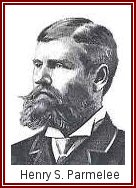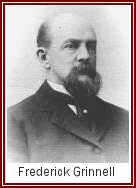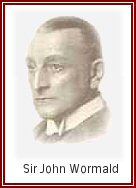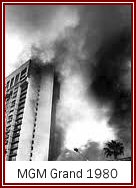The History of Fire Protection/Suppression Systems
The History Of Fire Protection

Patented 1910
A fire sprinkler system is an active fire protection measure, consisting of a water supply system, providing adequate pressure and flow rate to a water distribution piping system, onto which fire sprinklers are connected.
The fire prevention system is a good deal order than you might think. In 1806 Englishman John Carey developed the idea of a heat-operated devise that would distribute water through a system of perforated pipes to extinguish a fire. It is generally accepted that the world’s first sprinkler system was installed in the Theatre Royal, Drury Lane in the United Kingdom in 1812. The system was designed by Sir William Congreve, 2nd Baronet was covered in a patent dated the same year. The system consisted of a cylindrical airtight reservoir of water, fed by a 10 inch water main which branched to all parts of the theater. A series of smaller pipes feed from the distribution pipe were pierced with a series of 1/2 inches holes that poured water onto the fire.
By 1852, yes that’s before the Civil War, perforated pipe systems were commonly used in various industry buildings for fire protection in the United States. These early systems relied on manual interaction and did not automatically turn on when a fire was detected. It wasn’t the best system, but it was better than nothing.
Many early inventors began investing time and effort to improve these systems from the time they were initially used. But it wasn’t until 1860 when interest of an automated system began to have interest. Barnabas Wood of Nashville, Tennessee patented the first basic sprinkler. His design included a eutectic fusible solder link, which is the foundation for all modern-day sprinklers.
 In 1864 Major Stewart Harrison of the 1st Engineer Volunteers of London England, gave to the world the first Automatic Sprinkler Head. Working off of these overseas ideas, Philip Pratt of Abington Massachusetts developed his own version and patented the first automated sprinkler system in 1872 in the United States. Two years later Henry Parmelee of New Haven Connecticut improved on Pratt’s design and created the first practical automatic sprinkler head. The first system using this concept was installed in his own piano factory in 1874.
In 1864 Major Stewart Harrison of the 1st Engineer Volunteers of London England, gave to the world the first Automatic Sprinkler Head. Working off of these overseas ideas, Philip Pratt of Abington Massachusetts developed his own version and patented the first automated sprinkler system in 1872 in the United States. Two years later Henry Parmelee of New Haven Connecticut improved on Pratt’s design and created the first practical automatic sprinkler head. The first system using this concept was installed in his own piano factory in 1874.
In 1878 a Providence, Rhode Island man, Frederick Grinnell developed his own patented design and entered into a business arrangement with Parmelee to manufacture the “Parmelee” Sprinkler. Grinnell also designed and erected the piping installations in which the “Parmelee” Heads were fitted into buildings.
Interest in the Parmalee Sprinkler grew throughout New England. Taking advantage of this interest Parmelee and Grinnell organized a test and demonstration of a sprinkler system. The Wholesale Market Square of Bolton was erected. It was a shed 20ft x 30ft and was fitted with 6 Parmelee sprinklers. The shed contained wood chips, shavings, tallow, barrels and other such products and storage canisters one might find in the average industry building of the time. Paraffin oil was also added to the combustible material and set ablaze in 3 places by the Bolton Fire Brigade Superintendent. Immediately flames erupted to such size and intensity that spectators were driven back from the blaze. In 1minute and 20seconds later the first Sprinkler opened, followed by the remaining system. Within a short time the fire was reported suppressed.
 A week later a second test was provided with a modification in fuel and product. Dismantled mule carriages and wood shavings were included in the shed. The Bolton Evening News reported on June 30, 1881 – “fire was set to this inflammable material in five places, and in 58 seconds one of the caps had burst off and the Sprinkler was at work. The flames had no sooner appeared to be getting hold, and from the open doorway could be seen leaping to the ceiling, then they were hidden to sight in a cloud of smoke, and in three minutes the fire was practically quelled.”
A week later a second test was provided with a modification in fuel and product. Dismantled mule carriages and wood shavings were included in the shed. The Bolton Evening News reported on June 30, 1881 – “fire was set to this inflammable material in five places, and in 58 seconds one of the caps had burst off and the Sprinkler was at work. The flames had no sooner appeared to be getting hold, and from the open doorway could be seen leaping to the ceiling, then they were hidden to sight in a cloud of smoke, and in three minutes the fire was practically quelled.”
Parmelee took the reports of these tests and began selling the value of Automatic Sprinkler systems to Insurance companies. His sales pitch outlined not only the protection of life, but of equipment and product as well. He won over one of Bolton’s largest business owners, Cotton Spinner Major Hesketh, who was also Chairman of the Bolton Cotton Trades Mutual Insurance Company.
The Directors of this Company took note of these early experiments, and gave Parmelee his first order for the Sprinkler Installations. These systems were installed in the Cotton Spinning Mills of John Stones & Co., at Astley Bridge, Bolton, to be followed soon afterwards by the Alexandra Mills belonging to John Butler. The installation of fire suppression systems hit local newspapers and the news slowly spread throughout the industrial northeast.
Later, in 1881, Grinnell who was the chief mechanical engineer and general manager of the Jersey City Locomotive Works patented the first “sensitive” automatic sprinkler. The design was unique in the field of hydraulics and revolutionized the concepts of fire protection and suppression. Not long after, Grinnell entered into a business agreement with Sir William Mather of England who put Grinnell on the map as the most influential man in the fire prevention industry. Mather acquired the rights to the Grinnell sprinkler for the eastern hemisphere, along with Australia and India.
 Legislation for setting fire prevention, suppression and installation of fire protection systems began to appear in 1885. Some of the first rules applied in the sprinkler industry were penned by John Wormald, an Englishman who began his career with Parmelee.
Legislation for setting fire prevention, suppression and installation of fire protection systems began to appear in 1885. Some of the first rules applied in the sprinkler industry were penned by John Wormald, an Englishman who began his career with Parmelee.
In 1896 the National Fire Protection association (NFPA) was founded. It was the first time anyone had set and implemented standards for the installation of automatic fire sprinklers. His venture proved to be greatly successful and the NFPA standards became the uniformed installation requirements for the United States and Canada. Learn more about the Birth of NFPA from their article in the NFPA Journal® for the association´s centennial celebration in 1996.
But how effective were these early standards? A landmark study conducted in 1913 reported that over the 38-year period since sprinkler systems were used, only 5 people had been killed in fires that included a sprinkler system. After the results of this were published, NFPA established the formal Life Safety Code.
Grinnell’s own corporation continued improving sprinkler supplies and equipment. The Grinnell Corporation developed the quick opening device in 1920. In 1921 the company released the first Quartzoid sprinkler.
With each passing year, Grinnell and the NFPA became the recognized leaders in fire prevention safety. That reputation made it easy for the NFPA to issue its first guide to fire departments regarding the use of fire sprinkler systems in 1933. Then followed that up with the issuance of the Care and Maintenance of Sprinkler systems in 1939, taking the industry to the next level of fire protection.
Even with all these accepted standards and recognized benefits, sprinkler systems were still only used in industrial business. It wasn’t until the late 1940s when installation into hospitals, schools, hotels and other public buildings became a mandatory practice.
The NFPA continued its influence over the industry through the NFPA Quarterly magazine. In 1950 the periodical reported that sprinklers have been over 96% effective in recorded incidents of fire. A justification to the standards, equipment and oversight that NFPA put into place earlier in the century. But there was still room for growth.
Today’s Fire Protection Systems
There is very little Federal legislation regarding sprinkler system design and installation. Building codes are generally left to local jurisdictions and that includes the specifications for sprinkler systems. The Federal government has used its funding and monetary clout to strongly encourage fire safety standards.
 Even with all the improvements and desires to protect life through fire prevention and suppression systems, nothing impacts the process more than catastrophe. The MGM Grand Hotel fire in Las Vegas in 1980 was such an event. 85 guests and workers died during the fire captured on TV by local, national and even worldwide news agencies. The tragedy resulted in one of the nations first fire sprinkler retrofit ordinances for high-rise buildings.
Even with all the improvements and desires to protect life through fire prevention and suppression systems, nothing impacts the process more than catastrophe. The MGM Grand Hotel fire in Las Vegas in 1980 was such an event. 85 guests and workers died during the fire captured on TV by local, national and even worldwide news agencies. The tragedy resulted in one of the nations first fire sprinkler retrofit ordinances for high-rise buildings.
Many see this fire as the event that set off some of the first federal legislation for building safety. In 1990 the US Congress passed PL-101-391, better known as “The Hotel and Motel Safety Act (of 1990)”. This law requires that any hotel, meeting hall, or similar institution that receives federal funds (i.e. for a government traveler’s overnight stay, or a conference, etc.), must meet fire and other safety requirements. Included in these conditions is the implementation of working sprinklers.
Today fire sprinkler application and installation guidelines, and overall fire sprinkler system design guidelines, are provided by the standards set in several NFPA sections. The most common standards are found in NFPA 13, NFPA 13D, and NFPA 13R, NFPA 14, NFPA 20 and NFPA 24. These specifications define the accepted minimum requirements for building codes that are set by local jurisdictions in the United States. Many local jurisdictions add on to these requirements and various state jurisdictions include additional requirements within state wide building codes.
Other Historical Dates of Interest:
- 1863, Alanson Crane patented the fire extinguisher.
- 1853, the first practical fire engine was tested in Cincinnati, Ohio.
- 1878, the nation’s first firehouse pole was installed in New York City.
- 1821, the first rubber-lined cotton web fire hose was patented by Joseph Boyd of Boston.
- 1878, Joseph Winters patented the fire escape ladder.
- 1890, Daniel McCree of Chicago invented a portable fire escape
- 1896 the National Fire Protection association (NFPA) was founded
- During World War II, Percy Julian used a soy protein to produce AeroFoam, which suffocates gasoline and oil fires.
- 1953 NFPA Pamphlet 13 is revised to recognize what is today’s “standard sprinkler”.
- 1962 NFPA issues the first formal standard on foam-water sprinklers and spray systems.
- 1973 The Central Sprinkler Company pioneers the miniaturization of sprinklers.
- 1986 Tyco acquires Grinnell Supply Sales and Manufacturing.
- 1992 Central Sprinkler Company pioneers the industry’s first Extra Large Oriface (ELO) Sprinkler, and follows that up with the first “residential shut off valve”.
- 1999 Tyco acquires Central Sprinkler Company giving Tyco management over the industry’s 3 oldest and most recognizable names: Central, Gem and Star.
- 2002 Tyco Fire Products introduced the industry’s first Extended Coverage sprinkler for storage.
- 2005 NFPA mandated Life Safety Code (NFPA 101).
- 2006 Tyco launches the Rapid Response home fire sprinkler brand, designed specifically for residential application.
HFP has designed several commercial, industrial and residential sprinkler systems for our clients. We have the knowledge and experience to help you lay out a plan and design a system that’s right for your business or home. You can learn more about HFP, our experience and services by visiting our Home page or calling us at 704.877.2553
 © 2012 HFP / HFirePro.com / Holland Fire Protection, LLC. All Rights Reserved.
© 2012 HFP / HFirePro.com / Holland Fire Protection, LLC. All Rights Reserved.
Duplication of any material, in whole or in part, is strictly prohibited.
You must be logged in to post a comment.